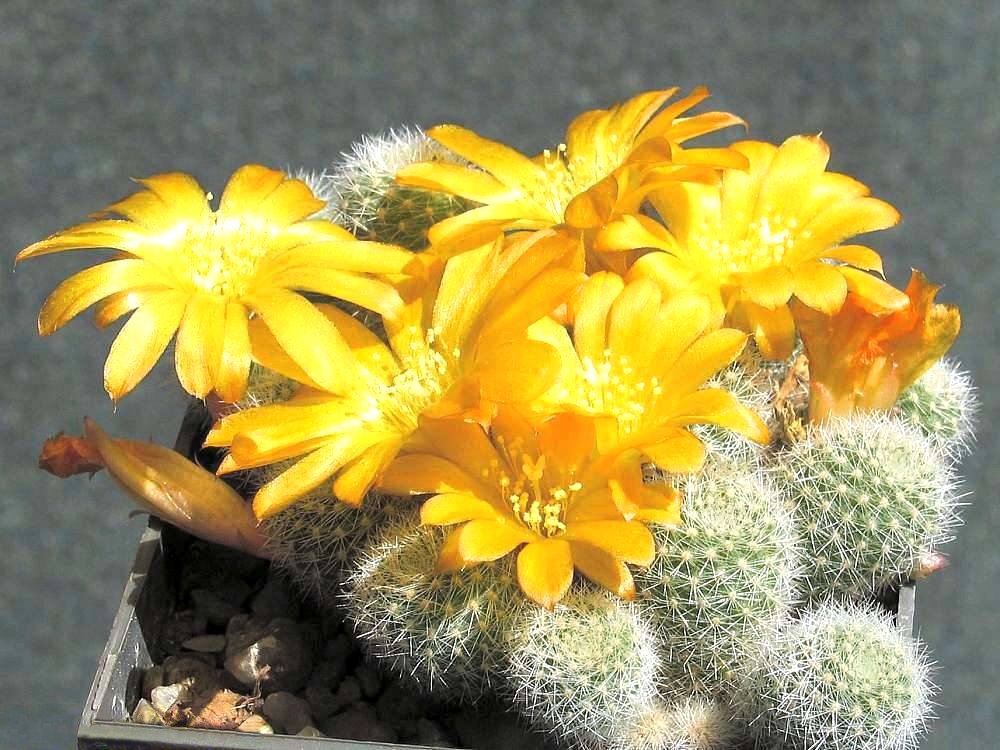|
Rebutia Padcayensis
''Rebutia padcayensis'' is a species of ''Rebutia'' found in Bolivia and Argentina. Description ''Rebutia padcayensis'' has a sprouting growth habit, featuring depressed, spherical bodies that are green to gray-green in color. The bodies can grow up to 2.5 cm tall and 4 cm in diameter. Little is known about the roots. The plant has 14 to 17 distinct ribs, each with areole In botany, areoles are small light- to dark-colored bumps on cactus, cacti out of which grow clusters of Thorns, spines, and prickles, spines. Areoles are important diagnostic features of cactus, cacti, and identify them as a family distinct fr ...s that are whitish to brown. Occasionally, a central spine is present, while the 7 to 15 peripheral spines are light yellow with brown tips, turning gray with age. These spines range from 3 to 20 mm in length. The flowers are red with a white throat, orange, or yellow, measuring 3 to 4.5 cm long and wide. The pericarpel and flower tube are mostly bare, with only 1 to ... [...More Info...] [...Related Items...] OR: [Wikipedia] [Google] [Baidu] |
Rebutia
''Rebutia'' is a genus of flowering plants in the family Cactaceae, native to Bolivia and Argentina. The limits of the genus have varied widely, depending on whether genera such as ''Aylostera'' and ''Weingartia'' are included or treated separately. , Plants of the World Online accepted only three species of ''Rebutia''. A very large number of plants that have been treated in cultivation as species of ''Rebutia'' are now generally regarded as varieties, forms or synonyms of a much smaller number of species, or have been transferred to other genera. Plants treated as ''Rebutia'' are generally small, colorful cacti, globular in form, which freely produce flowers that are relatively large in relation to the body. They have no distinctive ribs, but do have regularly arranged small tubercles. They are considered fairly easy to grow and they may produce large quantities of seeds that germinate freely around the parent plant. Taxonomy The genus was designated in 1895 by Karl Moritz Schu ... [...More Info...] [...Related Items...] OR: [Wikipedia] [Google] [Baidu] |
Areole
In botany, areoles are small light- to dark-colored bumps on cactus, cacti out of which grow clusters of Thorns, spines, and prickles, spines. Areoles are important diagnostic features of cactus, cacti, and identify them as a family distinct from other succulent plants. Gordon Douglas Rowley, Gordon Rowley - What is an Areole The spines are not easily detachable, but on certain cacti, members of the subfamily Opuntioideae, smaller, detachable bristles, glochids, also grow out of the areoles and afford additional protection. Areoles represent highly specialized branches on cacti. They evolved as abortive branch buds while their spines evolved as vestigial leaves. In branched cacti, such as Opuntioidiae and the saguaro, new branches grow from areoles, because that is where the buds are. The development of the areole seems to have been an important element in the adaptation of cacti to niches in desert ecology. Some of the Opuntioideae have spines, as well as glochids, on their a ... [...More Info...] [...Related Items...] OR: [Wikipedia] [Google] [Baidu] |
Cacti Of South America
A cactus (: cacti, cactuses, or less commonly, cactus) is a member of the plant family Cactaceae (), a family of the order Caryophyllales comprising about 127 genera with some 1,750 known species. The word ''cactus'' derives, through Latin, from the Ancient Greek word (''káktos''), a name originally used by Theophrastus for a spiny plant whose identity is now not certain. Cacti occur in a wide range of shapes and sizes. They are native to the Americas, ranging from Patagonia in the south to parts of western Canada in the north, with the exception of ''Rhipsalis baccifera'', which is also found in Africa and Sri Lanka. Cacti are adapted to live in very dry environments, including the Atacama Desert, one of the driest places on Earth. Because of this, cacti show many adaptations to conserve water. For example, almost all cacti are succulents, meaning they have thickened, fleshy parts adapted to store water. Unlike many other succulents, the stem is the only part of most cacti ... [...More Info...] [...Related Items...] OR: [Wikipedia] [Google] [Baidu] |
Flora Of Bolivia
Flora (: floras or florae) is all the plant life present in a particular region or time, generally the naturally occurring ( indigenous) native plants. The corresponding term for animals is ''fauna'', and for fungi, it is '' funga''. Sometimes bacteria and fungi are also referred to as flora as in the terms '' gut flora'' or ''skin flora'' for purposes of specificity. Etymology The word "flora" comes from the Latin name of Flora, the goddess of plants, flowers, and fertility in Roman mythology. The technical term "flora" is then derived from a metonymy of this goddess at the end of the sixteenth century. It was first used in poetry to denote the natural vegetation of an area, but soon also assumed the meaning of a work cataloguing such vegetation. Moreover, "Flora" was used to refer to the flowers of an artificial garden in the seventeenth century. The distinction between vegetation (the general appearance of a community) and flora (the taxonomic composition of a community) w ... [...More Info...] [...Related Items...] OR: [Wikipedia] [Google] [Baidu] |


